Effect of cutting height, microbial inoculation, and storage length on fermentation profile and nutrient composition of whole-plant corn silage
- PMID: 35529042
- PMCID: PMC9070462
- DOI: 10.1093/tas/txac037
Effect of cutting height, microbial inoculation, and storage length on fermentation profile and nutrient composition of whole-plant corn silage
Abstract
This study aimed to evaluate the effects of cutting height, heterofermentative microbial inoculants, and storage length on the fermentation profile and nutrient composition of whole-plant corn silage. The experiment was a completely randomized design with a 2 (cutting height) × 3 (microbial inoculation) × 5 (storage length) factorial arrangement of treatments. Corn forage was harvested at two cutting heights: either 25 cm (REG) or 65 cm (HI). Then, forage was inoculated with one of three microbial inoculants: (1) 300,000 CFU/g of fresh forage of Pediococcus acidilactici DSM 16243, Lentilactobacillus buchneri DSM 12856, and L. diolivorans DSM 32074 (LBLD; Bonsilage Speed inoculant, Provita Supplements Inc., Mendota Heights, MN), (2) 500,000 CFU/g of fresh forage of Lactiplantibacillus plantarum DSM 12837 and L. buchneri DSM 16774 (LPLB; Bonsilage Corn + WS inoculant, Provita Supplements Inc., Mendota Heights, MN), or (3) distilled water (CON). Last, forage was randomly assigned to ferment for 5, 7, 14, 28, or 56 d of storage in vacuum-sealed bags. Silage pH was affected by a three-way interaction (P = 0.01), where CON treatments decreased continually over time while LPLB and LBLD began to increase at later storage lengths. Acetic acid concentration was greater (P = 0.001) in LPLB and LBLD than CON silage after 56 d of storage. Silage treated with LBLD did not have detectable levels of propionic acid (P > 0.05), although 1-propanol concentration was greater (P = 0.001) in LBLD treatments after 56 d of storage. The concentrations of total acids and acetic acid were greater (P = 0.01 and P = 0.001, respectively) for REG silage compared to HI. Additionally, HI silage had greater (P = 0.001 and P = 0.001, respectively) concentrations of dry matter (DM) and starch, while neutral detergent fiber (aNDF) and lignin concentrations were lower (P = 0.001 and P = 0.001, respectively) in HI silage compared to REG silage. Last, HI silage had a greater (P = 0.001) NDF digestibility than REG silage. The results of this study demonstrate that increasing cutting height can improve nutrient composition of whole-plant corn silage. Additionally, results demonstrate that heterofermentative microbial inoculants can be used to shift silage fermentation to the production of lactic and acetic acids.
Keywords: 1-propanol; Lentilactobacillus buchneri; Lentilactobacillus diolivorans; heterofermentative; neutral detergent fiber digestibility; propionic acid.
© The Author(s) 2022. Published by Oxford University Press on behalf of the American Society of Animal Science.
Figures

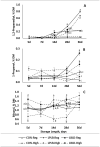
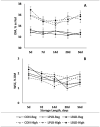
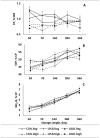
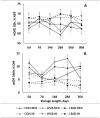
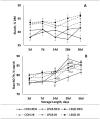
Similar articles
-
Effect of microbial inoculation and storage length on the fermentation profile and nutritive value of high-moisture corn ensiled at 2 different dry matter concentrations.J Anim Sci. 2022 Oct 1;100(10):skac254. doi: 10.1093/jas/skac254. J Anim Sci. 2022. PMID: 35931091 Free PMC article.
-
Effects of Microbial Inoculation and Storage Length on Fermentation Profile and Nutrient Composition of Whole-Plant Sorghum Silage of Different Varieties.Front Microbiol. 2021 Apr 13;12:660567. doi: 10.3389/fmicb.2021.660567. eCollection 2021. Front Microbiol. 2021. PMID: 33927709 Free PMC article.
-
Effect of dry matter content on the microbial community and on the effectiveness of a microbial inoculant to improve the aerobic stability of corn silage.J Dairy Sci. 2022 Jun;105(6):5024-5043. doi: 10.3168/jds.2021-21515. Epub 2022 Apr 22. J Dairy Sci. 2022. PMID: 35465996
-
Effect of applying molasses or inoculants containing homofermentative or heterofermentative bacteria at two rates on the fermentation and aerobic stability of corn silage.J Dairy Sci. 2009 Feb;92(2):690-7. doi: 10.3168/jds.2008-1546. J Dairy Sci. 2009. PMID: 19164681
-
Silage review: Recent advances and future uses of silage additives.J Dairy Sci. 2018 May;101(5):3980-4000. doi: 10.3168/jds.2017-13839. J Dairy Sci. 2018. PMID: 29685273 Review.
Cited by
-
Advancements in the Research and Application of Whole-Plant Maize Silage for Feeding Purposes.Animals (Basel). 2025 Jun 29;15(13):1922. doi: 10.3390/ani15131922. Animals (Basel). 2025. PMID: 40646821 Free PMC article. Review.
References
-
- Arriola, K. G., Vyas D., Kim D., Agarussi M. C. N., Silva V. P., Flores M., Jiang Y., Yanlin X., Pech-Cervantes A. A., Ferraretto L. F., . et al.. 2021. Effect of Lactobacillus hilgardii, Lactobacillus buchneri, or their combination on the fermentation and nutritive value of sorghum silage and corn silage. J. Dairy Sci. 104:9664–9675. doi:10.3168/jds.2020-19512. - DOI - PubMed
-
- AOAC International. 2012. Official methods of analysis, 19 ed. Arlington, VA: AOAC International.
-
- Aoki, Y., Oshita T., Namekawa H., Nemoto E., and Aoki M. . . 2013. Effect of cutting height on the chemical composition, nutritional value and yield, fermentative quality and aerobic stability of corn silage and relationship with plant maturity at harvest. Grassland Sci 59:211–220. doi:10.1111/grs.12033. - DOI
-
- Diepersloot, E. C., Pupo M. R., Ghizzi L. G., Gusmão J. O., C.Heinzen, Jr, McCary C. L., Wallau M. O., and Ferraretto L. F.. . 2021. Effects of microbial inoculation and storage length on fermentation profile and nutrient composition of whole-plant sorghum silage of different varieties. Front. Microbiol. 12:31–45. doi:10.3389/fmicb.2021.660567. - DOI - PMC - PubMed
LinkOut - more resources
Full Text Sources
